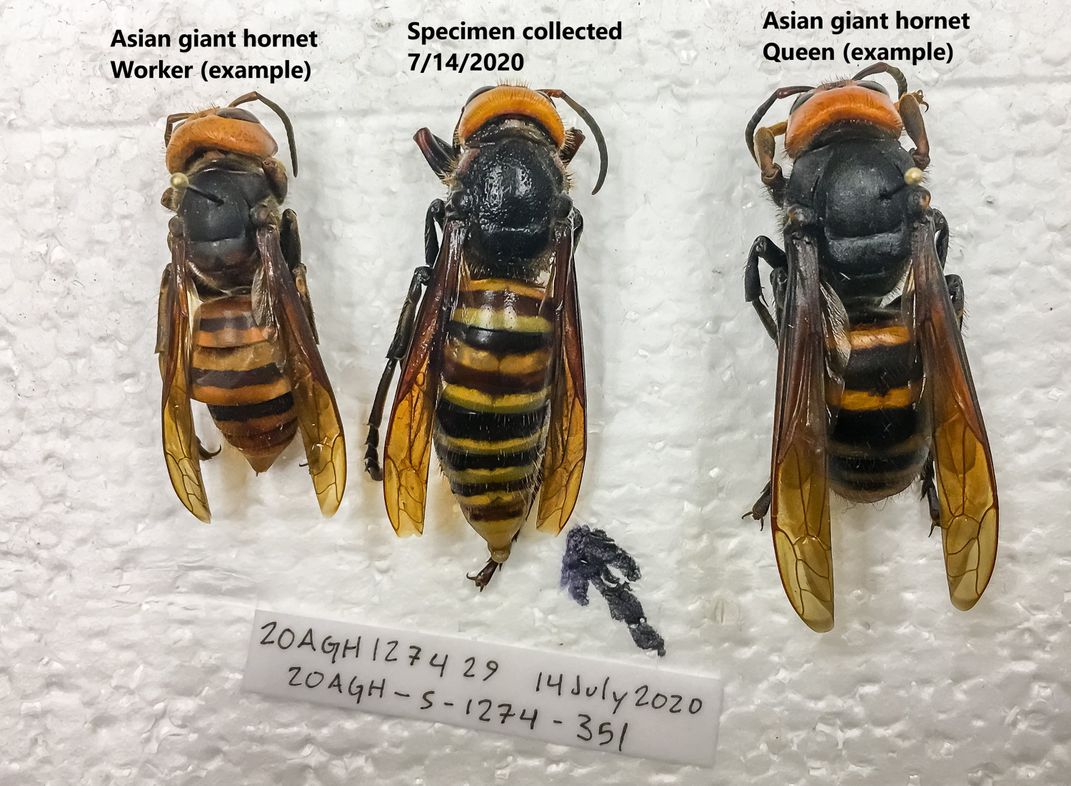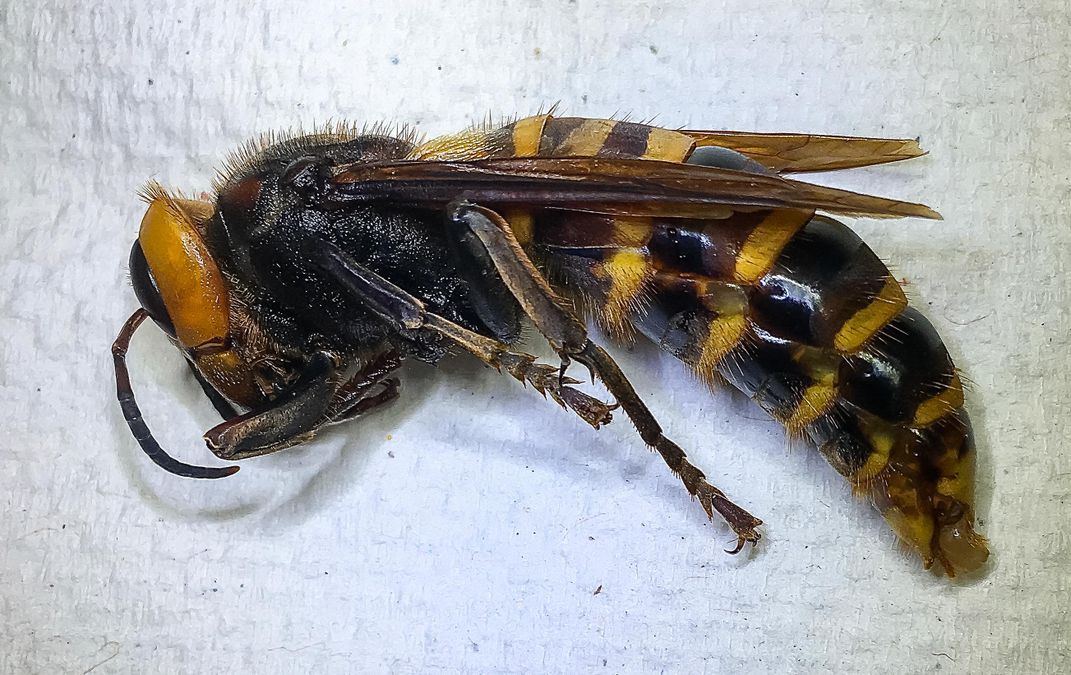Scientists Capture First Murder Hornet in Washington State
It’s a step in the direction of eliminating the invasive species, experts say
/https://tf-cmsv2-smithsonianmag-media.s3.amazonaws.com/filer/be/a2/bea23e2b-5c87-4224-b63a-155f7fa9b4ec/gettyimages-1227833168.jpg)
The Washington State Department of Agriculture trapped its first Asian giant hornet in July near Birch Bay, the agency announced in a statement. As their name implies, the insects are native to Asia, but they made headlines this year when they were first spotted in one Washington county.
Researchers have spent the last few months setting traps around the state in an attempt to curtail the invasive species’ spread. This hornet was discovered in a WSDA trap on July 14 and identified on July 29, per the statement.
Just five hornets have been officially sighted in the state, and this one is the first hornet to be trapped by scientists, report Harmeet Kaur and Konstantin Toropin for CNN.
“This is encouraging because it means we know that the traps work,” says Sven Spichiger, an entomologist with the WSDA, in the statement. “But it also means we have work to do.”
Experts fear that if they spread unchecked, the so-called “murder hornets” could damage the already fragile bee populations in North America, reports Christianna Silva for NPR. As Alex Fox reported for Smithsonian magazine in May, the hornets can grow stingers up to a quarter of an inch long, and are known for destroying honey bee hives “in a matter of hours,” decapitating adults and feeding on the larvae.
The insects also stand out for their size. Queen “murder hornets” can grow up to two inches long, and their spiked mandibles pack an extremely painful and poisonous sting for humans—much worse than that of native bee species, as Mike Baker reported for the New York Times in May. Still, experts say the threat posed to humans is relatively small.
“You shouldn’t worry about it,” Floyd Shockley, entomology collections manager at the Smithsonian National Museum of Natural History, told Fox in May. “More people die of honey bee stings in the U.S. than die annually, globally, from these hornets. About 60 to 80 people die from [allergic] reactions to honey bee stings [in the U.S.]; only about 40 people die per year, in Asia, mostly in Japan, from reactions to the [giant hornet] stings.”
Even though Asian giant hornets have only been identified in one Washington county, many people across the country have mistaken native hornet species for the “murder” variety—a trend fueled by widespread fear about the insects and the viral nature of social media, reports Douglas Main for National Geographic.
In addition to traps set by the WSDA, citizen scientists and other participants have set up more than 1,300 hornet traps. Homemade versions of the traps typically consist of a modified plastic bottle filled with orange juice and rice vinegar, according to instructions on the agency’s website.
Alyse Stanley reports for Gizmodo that the WSDA has yet to determine if the hornet captured in July is a queen or worker—it seems bigger than other worker specimens, but smaller than a queen.
Now that they’ve successfully trapped a hornet, scientists plan to search for nests nearby. The WSDA hopes to eradicate all the murder hornets in the area by mid-September, reports NPR.
/https://tf-cmsv2-smithsonianmag-media.s3.amazonaws.com/accounts/headshot/nora.png)


/https://tf-cmsv2-smithsonianmag-media.s3.amazonaws.com/accounts/headshot/nora.png)